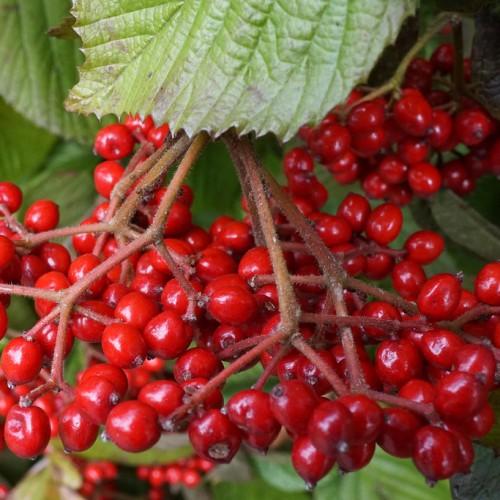
linden viburnum
Viburnum dilatatum 'Henneke' CARDINAL CANDY
Cycle:
Perennial
Watering:
Average
Hardiness Zone:
4 - 7
Flowers:
Flowers
Sun:
Full sun,part shade
Leaf:
Yes
Growth Rate:
Low
Maintenance:
Low
Drought Tolerant:
Yes
Salt Tolerant:
Yes
Care Level:
Medium
watering
Linden viburnum needs to be watered about once or twice a week, depending on the season. In the summer months, water regularly to keep the soil moist. Water more frequently during drought spells. For the colder months, the frequency of watering should be decreased. The soil should be allowed to dry out slightly between waterings. Be careful not to over-water, as this can cause root rot. A good gauge to ensure that the soil is at the correct moisture level is to check the soil at a depth of 2-3 inches. If it is dry at this depth, water until the soil is evenly damp.
sunlight
The linden viburnum (Viburnum dilatatum 'Henneke' CARDINAL CANDY) will need at least 6-8 hours of direct sunlight per day, preferably in the morning or late afternoon. This species of viburnum will also thrive in partial shade, particularly in the afternoon during the summer months when temperatures are hot and sunlight can be more intense. When planted in full sun, it is important to provide adequate watering during periods of drought. When planting in partial shade, regular water will also be essential during the dry season to maintain adequate moisture levels.
pruning
Linden viburnum (Viburnum dilatatum 'Henneke' CARDINAL CANDY) should be pruned in late spring or early summer, when it has finished blooming. Prune out any dead, weak, or diseased branches, and reduce the overall size of the plant. Prune up to 1-third of the total canopy, and avoid shearing or trimming the plant into unnaturally perfect shapes. Prune away branches that cross or rub against each other, and thin out congested or overgrown areas. Always make cuts at a 45-degree angle, and slightly higher than the branch collar, and keep the pruning tools sharp to avoid damage to the plant.
